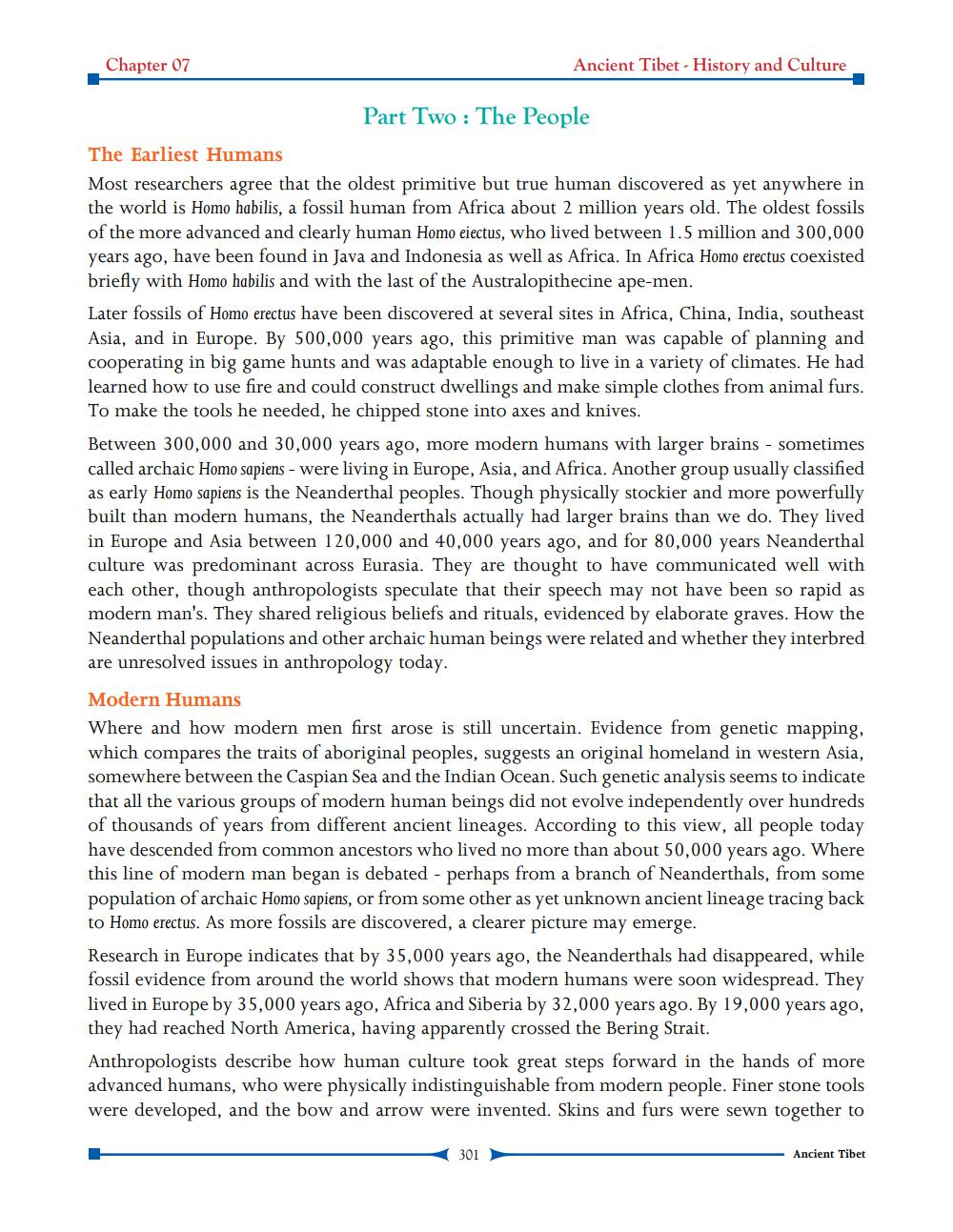________________
Chapter 07
Ancient Tibet - History and Culture
Part Two : The People The Earliest Humans Most researchers agree that the oldest primitive but true human discovered as yet anywhere in the world is Homo habilis, a fossil human from Africa about 2 million years old. The oldest fossils of the more advanced and clearly human Homo eiectus, who lived between 1.5 million and 300,000 years ago, have been found in Java and Indonesia as well as Africa. In Africa Homo erectus coexisted briefly with Homo habilis and with the last of the Australopithecine ape-men. Later fossils of Homo erectus have been discovered at several sites in Africa, China, India, southeast Asia, and in Europe. By 500,000 years ago, this primitive man was capable of planning and cooperating in big game hunts and was adaptable enough to live in a variety of climates. He had learned how to use fire and could construct dwellings and make simple clothes from animal furs. To make the tools he needed, he chipped stone into axes and knives. Between 300,000 and 30,000 years ago, more modern humans with larger brains - sometimes called archaic Homo sapiens - were living in Europe, Asia, and Africa. Another group usually classified as early Homo sapiens is the Neanderthal peoples. Though physically stockier and more powerfully built than modern humans, the Neanderthals actually had larger brains than we do. They lived in Europe and Asia between 120,000 and 40,000 years ago, and for 80,000 years Neanderthal culture was predominant across Eurasia. They are thought to have communicated well with each other, though anthropologists speculate that their speech may not have been so rapid as modern man's. They shared religious beliefs and rituals, evidenced by elaborate graves. How the Neanderthal populations and other archaic human beings were related and whether they interbred are unresolved issues in anthropology today.
Modern Humans Where and how modern men first arose is still uncertain. Evidence from genetic mapping, which compares the traits of aboriginal peoples, suggests an original homeland in western Asia, somewhere between the Caspian Sea and the Indian Ocean. Such genetic analysis seems to indicate that all the various groups of modern human beings did not evolve independently over hundreds of thousands of years from different ancient lineages. According to this view, all people today have descended from common ancestors who lived no more than about 50,000 years ago. Where this line of modern man began is debated - perhaps from a branch of Neanderthals, from some population of archaic Homo sapiens, or from some other as yet unknown ancient lineage tracing back to Homo erectus. As more fossils are discovered, a clearer picture may emerge. Research in Europe indicates that by 35,000 years ago, the Neanderthals had disappeared, while fossil evidence from around the world shows that modern humans were soon widespread. They lived in Europe by 35,000 years ago, Africa and Siberia by 32,000 years ago. By 19,000 years ago, they had reached North America, having apparently crossed the Bering Strait. Anthropologists describe how human culture took great steps forward in the hands of more advanced humans, who were physically indistinguishable from modern people. Finer stone tools were developed, and the bow and arrow were invented. Skins and furs were sewn together to
301
Ancient Tibet




